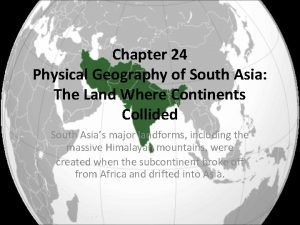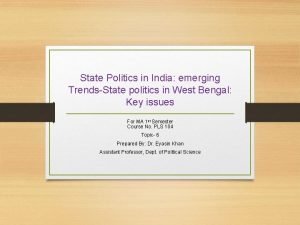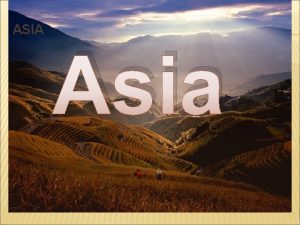India and Special Economic Zones Emerging Asia WJEC





- Slides: 5

India and Special Economic Zones Emerging Asia WJEC A 2 Geography Theme India. 1. 2 How and why is the economy changing ? Factors affecting the growth of financial industries

India’s Special Economic Zones n n In June 2007 the Indian government gave final approval for a further 24 Special Economic Zones (SEZs) to be created in the country. The tax-free enclaves are seen as a way to promote trade. Overall, Manmohan Singh's government has given approval for 111 SEZs between 2005 and 2007 India believes that the zones will help provide employment and secure large amounts of foreign investment

India’s Special Economic Zones n n Among projects given clearance are Reliance Industries' proposed 440 hectare site in northern state of Haryana near New Delhi, and another in Rewas in the western state of Maharashtra. The Rewas scheme, located in the Delhi-Mumbai corridor, will have about 200 highspeed freight trains linking trade zones with industrial complexes and ports

Problems of SEZ’s n n Critics of the proposed SEZs say that rather than promote prosperity, the zones will in fact create economic hardship because they would be built on prime agricultural land, without adequate compensation for farmers. They say that the zones would become "islands of affluence in a sea of deprivation", only serving to exacerbate India's already wide regional imbalances.

Problems of SEZ’s n n The initiative has inspired huge interest among would-be developers but has also prompted resistance from rural communities in India, where farming is the mainstay of some two-thirds of the population. Protests by farmers has led the Indian government to bring in a law that would ensure financial compensation and jobs to people who would be displaced by these zones









